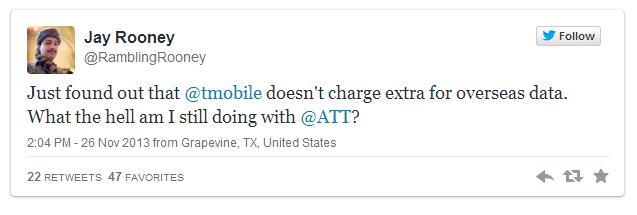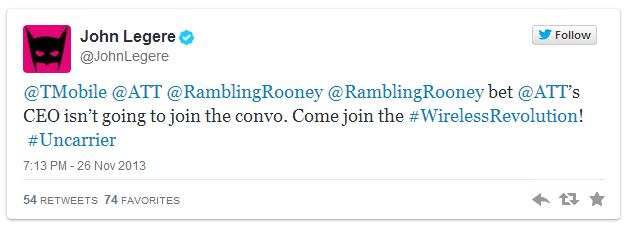
by Fronetics | Dec 16, 2013 | Blog, Logistics, Strategy, Supply Chain, Talent

Kathryn Minshew, founder and CEO of The Muse and The Daily Muse, began a piece for the Harvard Business Blog Network with this sage advice: “Network Your Face Off.” The truth and value of this statement cannot be underestimated. Here are 5 reasons why networking is essential and why connections matter.
1. The larger the network the larger the salary
A recent study of 6,000 executives in over 3,000 firms found that the more connections an employee has, the greater the salary. Specifically the study found that a 50 percent increase in network size accompanies a 3.8 percent increase in salary with respect to the average.
2. Networks beget jobs
A survey conducted by The Adler Group found that 46 percent of active candidates and 49 percent of passive candidates found employment thanks to networking. Similarly, a study conducted by Banque de France and the University of Toulouse noted that half of all jobs in the United States are filled through personal contacts. ABC News cites an even higher number – according to ABC News, 80 percent of jobs are landed through networking.
3. Networks bring opportunities
The opportunities networks can bring include: partnerships, invitations to events, introductions, and invitations to give talks and presentations. In short networks bring opportunities that benefit and feed your career, professional development, and personal interests.
4. Networks make you smarter
Knowing what is happening in your field and industry is vital. When you have a strong network you are more likely to be “in the know” than those who do not have a strong and active network.
5. Networks make you happy
Minshew writes: “Networks are powerful, and when done right leave you surrounded by a core of individuals who are all rooting for your success and happy to help you.” So true.
Networking is essential. Get out there and build your network.

by Fronetics | Dec 2, 2013 | Blog, Marketing, Social Media, Strategy

Not too long ago I did not use Twitter and I relished being able to say that I had never sent a Tweet. I believed Twitter was not applicable to me – I don’t follow celebrity gossip and whereabouts, I don’t like the idea of sharing my personal thoughts and experiences with 232 million strangers, and I have yet to take a “selfie” (much less share it with said 232 million strangers). In short, I didn’t use Twitter because I did not understand Twitter and I had no idea of its value. When I finally decided to remove my head from the sand and take stock of Twitter I was blown away not only by what Twitter really is, but also by my ignorance. Using Twitter for business is essential. If you and your business have not yet taken the plunge into the Twitter pool it is time to grab your trunks and jump.
A 2013 study conducted by the Center for Marketing Research at the University of Dartmouth found that 77 percent of Fortune 500 companies have an active corporate blog. The study also found that rank influences Twitter use – 43 percent of the Twitter accounts are held by companies in the top 200 on the list as compared with the bottom 200 which hold 43 percent of the Twitter accounts. Similarly, 67 percent of the Inc. 500 use Twitter. Looking at small businesses, in 2013 Constant Contact reported that 25 percent of small businesses use Twitter – up from only 7 percent last year.
Why is it important to know who is using Twitter? Because those who are using Twitter are more likely to gain customers than those who don’t. A survey conducted by Market Probe International found that 72 percent of those who follow a business on Twitter are more likely to make a purchase from that business and that 82 percent of followers are more likely to recommend a product or service to friends and family. The survey also found that 85 percent of respondents reported feeling a closer connection to a small business if they follow them on Twitter.
In addition to demand generation, the following are reasons why you and your business should use Twitter:
- Increase market intelligence
- Drive traffic to your website
- Monitor your business and your brand
- Connect with customers
- Manage risk
- Share information
Still skeptical?
SJF Material Handling Equipment is the single largest source for new, used and refurbished material handling equipment in the US. The company has built an extensive and successful social media network – one which uses Twitter – with the objective of increasing sales. The company has 55,797 followers on Twitter (and is gaining 200 to 400 followers each week). Stafford Sterner, President of SJF, says that Twitter enables the company to cover more ground and attract customers from unexpected and often unrelated circles.
Another example is the battle for customers between AT&T and T-Mobile that played out on Twitter. The throw down began when Jay Rooney Tweeted that he was considering a switch from AT&T to T-Mobile.

What occurred next was an all-out battle between AT&T and T-Mobile for Jay Rooney (and other customers) – both companies took to Twitter to try to convince Rooney that their company and service is the best. Rooney does a great job of summarizing the exchange:

The battle for Rooney intensifies and T-Mobile’s Chief Executive John Legere jumps in the fray:

Impressed, Jay Rooney decides to make the jump to T-Mobile. What’s more, the conversation caught the attention of many others. In the end, the exchange netted customers for T-Mobile.
(For more on the exchange, check out ZDNet’s article on battle between AT&T and T-Mobile.)
Ready to take the plunge? Social Media Examiner has a great how to article on how to use Twitter for business and for marketing.

by Elizabeth Hines | Nov 19, 2013 | Blog, Leadership, Strategy, Talent

Career Builder identified Supply Chain Manager as a Top Growth Job for 2013. Why did supply chain manager make the short list (just 18 jobs made the list)? Supply chain manager has experienced an 8 percent job growth since 2010 and there is just one active candidate for every five posted jobs. Colleges and universities have recognized the demand – and opportunity. The Wall Street Journal recently reported that supply chain management is the “hot new MBA” and that “more than a half-dozen universities have recently introduced undergraduate majors, M.B.A. concentrations and even entire degree programs dedicated to procurement, inventory management and global supply-chain strategy.”
Finding the right person for a job opening is essential. Hiring the wrong person is a costly mistake not only financially, but also in terms of team morale and productivity. Given the demand for supply chain talent, the dearth of experienced talent, and an increasing number of newly graduated talent entering the job market – how do you find and hire the right person? Here are a few tips on how to hire.
Look across the industry
Look across the industry and identify individuals who are a good match to your company and the role.
Look within the company
Look inside your company. Is there someone who would thrive in a new role – even if the role is outside of their current field?
Look outside the industry
While this may seem counter intuitive, bringing in a talented professional from outside the industry could provide the fresh ideas and insight that your company.
Work with colleges and universities
Develop a relationship with colleges and universities. Work with the schools to identify upcoming or recent graduates who are/were stars. Another option is to establish an internship program with a school.
Work with a strategic advisory firm
Working with a strategic advisory firm is an option as well. This type of partnership, such as the ones I build with our clients, can make identifying the right talent for the right position easier. An advisory firm often has the pulse on where the most talented people are in the supply chain and logistics industry. This type of partner can launch a successful candidate search process, get new hires up and running, and help retain talent for the long run.
Be creative and have vision
Throughout the hiring process remember that creativity and vision are key.
Offer an out
Here is a great example of offering an out. Zappos pays new employees to quit. You read that right – the company pays new employees to quit their jobs. Once new employees have completed their 4 wee training program they are given “The Offer.” That is, they can choose to remain with the company or quit. If they choose to quit they will be paid for the time they worked and given an additional $3,000. The employee has 24 hours to decide. Why does the company do this? If the employee is not happy in the new position and not committed, it makes sense for both parties to cut and run.

by Elizabeth Hines | Nov 12, 2013 | Blog, Leadership, Strategy

Source: www.Chickenmaker.net
A 2013 study conducted by Deloitte found that 64 percent of the global executives surveyed reported they had a risk management program in place that is specific to the supply chain. That being said, 45 percent of the respondents said their programs were somewhat effective or not effective at all. Respondents — especially those in the technology, industrial products, and diversified manufacturing sectors — reported that supply chain disruptions have become more costly over the past three years. They also cited margin erosion and sudden demand change as two of the most costly problems. Moreover, the 2013 Global Supply Chain and Risk Management Survey conducted by the MIT Forum for Supply Innovation and PricewaterhouseCoopers found that in the last 12 months more than 60 percent of companies surveyed reported that their performance indicators had dropped by more than three percent due to supply chain disruptions. While there are many factors which are likely to contribute to the issues pointed to in these studies, I believe that one is that companies focus largely developing risk management strategies to mitigate and cope cataclysmic events and not the day-to-day bumps in the road. As such, companies tend to be ill-prepared to handle the day-to-day bumps.
Big events are outlier events
Because big events such as hurricanes, tornados, tsunamis, and terrorist attacks can have a long-lasting impact and often visual impact on the logistics and supply chain industries they tend to stay top of mind. That being said, these events are outlier events. “Outlier events have much more influence than they should,” Professor Ananth Raman of Harvard Business School told David Stauffer for an article for the school’s website. M. Eric Johnson, director of the Center for Digital Strategies at Dartmouth College’s Tuck School of Business, told Stauffer for the same article, “Managers will often consider the giant risk but ignore the smaller risks that create friction in the supply chain.” When companies ignore the smaller risks, they do so at their peril.
You can’t ignore the day-to-day
Creating risk management strategies that focus on the everyday events is critical. Dealing with these events in a reactive and piecemeal fashion is inefficient and ineffective and can significantly hurt your company. The following are some tips on what to consider when developing an effective risk management strategy which focuses on the everyday risks:
- Employ a strategy that is robust and closely monitored.
- Put a leader in charge.
- Clearly define your process and make it comprehensive. Establish a well-defined process to mitigate events such as cashflow contingencies, client credit risk and default, competitor interruptions, inventory risk, data backup and recovery, key client attrition, employee satisfaction and retention, social media use and abuse, and reputation recovery.
- Make sure the strategy is both nimble and flexible. Being intractable can exacerbate issues.
- Don’t forget about human resources. Don’t be afraid to move employees into new roles. Moving an employee into a new role permanently (or for a specified period to deal with an event) is a powerful and effective strategy.
- Be first. If there is a problem, be sure that the clients hear about the problem from you. When you contact clients, tell them what the issue is and what you are doing to address it. Be clear, concise, and honest.
- Educate. Take the time to make sure everyone is educated about the strategy. If just one person knows the strategy, it will not be effective.
A big event might happen, but everyday events will happen… every day. Don’t give your company Chicken Little syndrome by focusing only on big events.

by Elizabeth Hines | Nov 5, 2013 | Blog, Leadership, Strategy

Companies within the logistics and supply chain industries are often built around a small number of clients because these clients generate 80 percent (or more) of revenue – The Pareto Principle aka the 80/20 rule. Some companies choose not to openly acknowledge this reality; I believe this is done at their peril. Rather than ignore the elephant in the room, accept it, and establish a culture that addresses this reality. This will mitigate risk and enable you to be able to better manage both time and resources within your company.
Here are tips on how to manage when the classic 80/20 applies:
Build a culture of intellectual honesty
The first step is to build a culture of intellectually honesty. While your employees can probably guess that a small number of clients are generating the majority of your company’s revenue – be open. Take the time to get the entire company on the same page. Establishing a culture of intellectual honesty enables management to implement effective and appropriate risk and management structures to be put in place. Additionally, it empowers employees, because it allows employees to better understand why certain systems and structures have been established.
Exceed expectation, anticipate needs, don’t get lazy
With respect to your high revenue generating clients – exceed their expectations and anticipate their needs. Just because you have a strong relationship with them, and maybe even a long-term relationship, you never know what the future will bring. New management, an acquisition, merger… there are several events that could end the relationship. Never assume that history will make your relationship bulletproof.
Moreover, don’t get lazy. Be proactive. Every time you pick up the phone to talk with the client or every time you meet with them — impress. You need to know their strategy and know their needs — immediate, mid-, and long-term. What’s more – be open with the client. Let them know they are important to you. If there is an issue make them aware of it, let them know you are being responsive, and address the issue ASAP. Furthermore, ask the client for feedback, listen, and be responsive — address their concerns in a timely fashion. Finally, follow up with the client to make sure they feel their concerns were addressed.
Manage talent
Many companies get in the trap of assigning a large number of employees to the revenue-generators. At issue is that if the big client terminates their relationship with you, you may be forced to lay off talent — good talent. Additionally, this type of structure is generally fraught with bureaucracy. Instead, assign a small, focused team to the client. This type of team will have fewer bureaucratic hurdles and will do far better than a bloated team that has to battle red tape. And importantly, if you lose the client, you are more likely to be able to reallocate quality team members.
Establish an evaluation process
Regarding the smaller clients, it is important to have a defined and accountable process in place that evaluates why they are part of the 80 percent. If the client is not a good fit to your model, manage them out of your base. If they are a good fit, delight the client and treat them as if they were the big fish — you never know, one day they could be your biggest client.
Put a leader in charge
Finally, it is essential to put a leader in charge of client acquisition. By putting someone in charge who understands your company culture, the business model, and the company needs, client acquisition will be more effective and more efficient.









